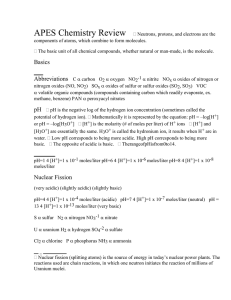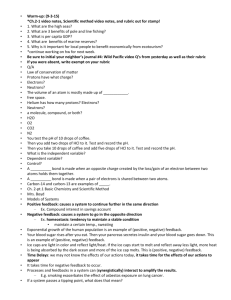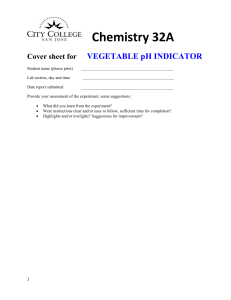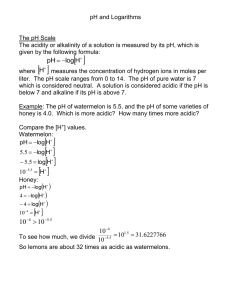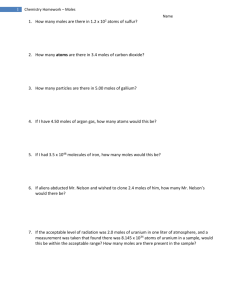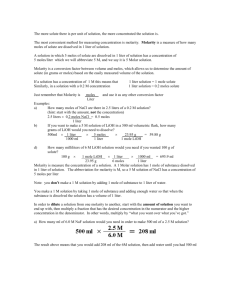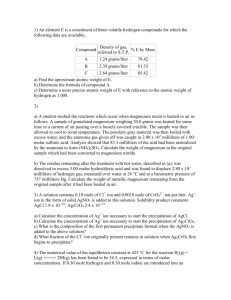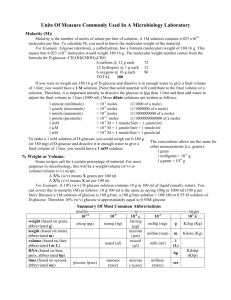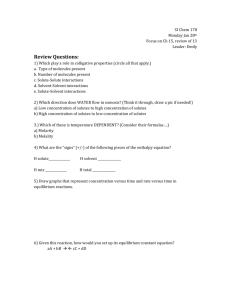APES Chemistry Review
advertisement
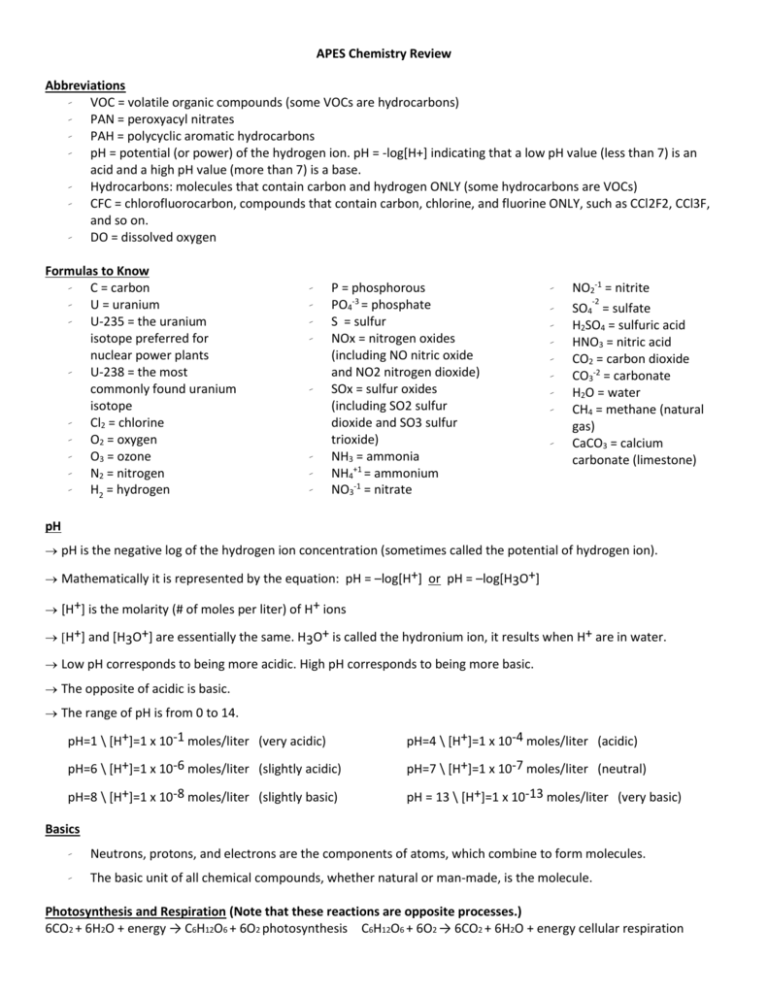
APES Chemistry Review Abbreviations - VOC = volatile organic compounds (some VOCs are hydrocarbons) - PAN = peroxyacyl nitrates - PAH = polycyclic aromatic hydrocarbons - pH = potential (or power) of the hydrogen ion. pH = -log[H+] indicating that a low pH value (less than 7) is an acid and a high pH value (more than 7) is a base. - Hydrocarbons: molecules that contain carbon and hydrogen ONLY (some hydrocarbons are VOCs) - CFC = chlorofluorocarbon, compounds that contain carbon, chlorine, and fluorine ONLY, such as CCl2F2, CCl3F, and so on. - DO = dissolved oxygen Formulas to Know - C = carbon - U = uranium - U-235 = the uranium isotope preferred for nuclear power plants - U-238 = the most commonly found uranium isotope - Cl2 = chlorine - O2 = oxygen - O3 = ozone - N2 = nitrogen - H2 = hydrogen - - - P = phosphorous PO4-3 = phosphate S = sulfur NOx = nitrogen oxides (including NO nitric oxide and NO2 nitrogen dioxide) SOx = sulfur oxides (including SO2 sulfur dioxide and SO3 sulfur trioxide) NH3 = ammonia NH4+1 = ammonium NO3-1 = nitrate - NO2-1 = nitrite -2 SO4 = sulfate H2SO4 = sulfuric acid HNO3 = nitric acid CO2 = carbon dioxide CO3-2 = carbonate H2O = water CH4 = methane (natural gas) CaCO3 = calcium carbonate (limestone) pH pH is the negative log of the hydrogen ion concentration (sometimes called the potential of hydrogen ion). Mathematically it is represented by the equation: pH = –log[H+] or pH = –log[H3O+] [H+] is the molarity (# of moles per liter) of H+ ions [H+] and [H3O+] are essentially the same. H3O+ is called the hydronium ion, it results when H+ are in water. Low pH corresponds to being more acidic. High pH corresponds to being more basic. The opposite of acidic is basic. The range of pH is from 0 to 14. pH=1 \ [H+]=1 x 10-1 moles/liter (very acidic) pH=4 \ [H+]=1 x 10-4 moles/liter (acidic) pH=6 \ [H+]=1 x 10-6 moles/liter (slightly acidic) pH=7 \ [H+]=1 x 10-7 moles/liter (neutral) pH=8 \ [H+]=1 x 10-8 moles/liter (slightly basic) pH = 13 \ [H+]=1 x 10-13 moles/liter (very basic) Basics - Neutrons, protons, and electrons are the components of atoms, which combine to form molecules. - The basic unit of all chemical compounds, whether natural or man-made, is the molecule. Photosynthesis and Respiration (Note that these reactions are opposite processes.) 6CO2 + 6H2O + energy → C6H12O6 + 6O2 photosynthesis C6H12O6 + 6O2 → 6CO2 + 6H2O + energy cellular respiration
